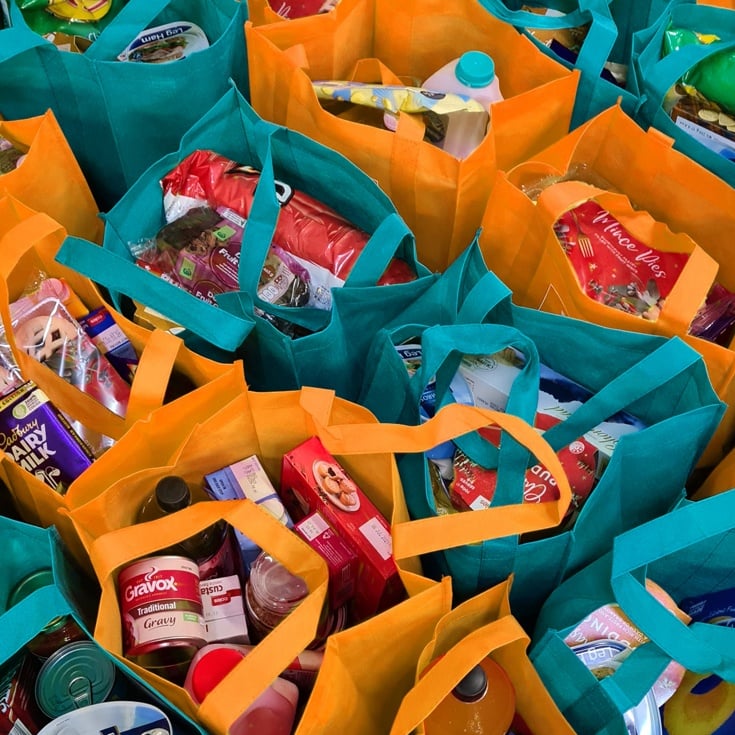The COVID-19 pandemic has badly impacted most areas of Australian society. However, the pandemic has hit the not-for-profit sector especially hard over the last 18 months. A majority of not-for-profit organisations have reported an increase in demand for their services and having to significantly reduce, adjust or suspend their activities to ensure the safety of staff and clients [1]. Not-for-profit organisations have also had to adapt to changing funding environments, such as the inability to run in-person fundraising events. These issues will continue to escalate as the longer-term effects of the pandemic unfold.
Charities are agile and adaptable, responding quickly to their communities’ changing situations and needs. While program funding from philanthropists has its place for long-term strategic projects, flexible, untied funding has the most significant potential for impact in the current environment.
This research piece from the APS team provides insights into eight segments of the not-for-profit sector particularly badly affected by the pandemic.

"A majority of not-for-profit organisations have reported an increase in demand for their services and having to significantly reduce, adjust or suspend their activities to ensure the safety of staff and clients [1]."
Domestic violence
In times of disaster, domestic violence rates tend to increase. There were increased calls to domestic violence helplines during the lockdown in Australia, including an 11% increase in calls to 1800RESPECT and a 26% increase in calls to Mensline. Google reported a 75% increase in internet searches relating to support for domestic violence. These increased calls and searches likely signal a much bigger problem, as survivors socially isolated at home with their abusers often cannot seek help. Social distancing measures can also prevent survivors from help-seeking and reduce their ability to leave. [2]
Homelessness
The economic impact of COVID-19 and its responses placed many Australians at risk of homelessness. The onset of COVID-19 occurred against a backdrop of intensifying housing affordability stress, affecting large parts of the country. In many cities and regions, house prices and rents have continued to trend upwards for much of this period, while homelessness has also outpaced broader population growth. [3]
In the first wave of the pandemic, governments around Australia provided temporary housing to people experiencing homelessness; however, how stable or permanent these accommodation opportunities are is unknown.
Mental health
The COVID-19 pandemic has dramatically influenced the social determinants of mental health and well-being through the effects of lockdown and the lasting impacts of sudden disruptions to financial stability, employment, secure housing, relationships, and social connections.
COVID-19 has also exacerbated complex social issues such as unemployment, entrenched disadvantage, addictions, homelessness, family stress and domestic violence. There is emerging evidence that vulnerable populations have experienced mental health impacts at disproportionate levels. The Centre for Social Impact’s 100 Families research found that during the COVID crisis in Australia, families on low incomes have reported feeling depressed or anxious at twice the rates of the general community. [4]
Throughout 2020 and in the early months of 2021, many researchers gathered evidence revealing heightened psychological distress during the pandemic. The increased usage of mental health services continued in 2021 and is still ongoing. [5]
The pandemic has also meant that, despite the increased need, service providers had to change their delivery mechanisms as face-to-face interventions haven’t often been possible. Health practitioners have needed to develop and invest in alternatives, including telehealth and digital solutions, which aren’t always accessible to many disadvantaged, rural and regional communities.
The far-reaching economic and social impacts of COVID-19 will continue to take a toll on Australians’ mental health. Sometimes referred to as ‘the second epidemic’, evidence of this mental health burden is already emerging.
Food security
Hunger is affecting people across all demographics right now, particularly young working families, retirees, and Indigenous people living in regional Australia. The pandemic continues to worsen pre-existing issues and cause others to experience vulnerability for the first time. More than one in three food-insecure people in NSW (39%) had never been in that position before. People of every age, living alone, in families and groups, are now susceptible to food insecurity during COVID. Food security is affecting people in cities right through to those in remote areas, and, surprisingly, it affects more people in some form of employment (64%) than those who have none. [6]

"More than one in three food-insecure people in NSW (39%) had never been in that position before."
Education
The pandemic may have deepened the already existing inequality between certain groups of young people. Many disadvantaged students, who were already falling behind before the crisis, will have slipped further back. Teachers working in schools in low socio-economic areas believe students learnt only 25-to-50 per cent of what they would typically learn in class. Even if remote learning was working well, disadvantaged students are likely to have achieved at about 50 per cent of their regular rate, losing about a month of learning over a two-month lockdown. [7]
The most likely groups of young people to have their learning outcomes compromised are young children who started school already behind, older students at risk of disengaging and those who have had contact with the child protection system [8].
Young people
The COVID-19 pandemic has affected young people across several areas, many of which are interrelated. The Murdoch Children’s Research Institute has highlighted the significant toll of the pandemic on children and young people’s mental well-being, academic results and physical health. [9]
During the pandemic, the Kids Helpline and paediatric emergency departments experienced a rapid rise in mental health (4.6% monthly increase) and self-harm presentations (5.7% monthly increase). Research from the US, China and the UK have also reported deteriorations in the mental health of some children and adolescents.
Young people were left unemployed by the pandemic in far greater numbers than adults. Before the COVID-19 pandemic, young people aged 15-24 were already disproportionately adversely affected in the labour market compared to other age cohorts. In December 2019, the youth unemployment rate was 11.5%, more than double that of the general population, of 5.1%. COVID-19 restrictions, including direct business closures, social distancing, and stay-at-home provisions, hit young people particularly hard in Australia.
The youth labour market is characterised by higher levels of employment in consumer-facing roles such as in retail, hospitality, events, fitness and entertainment industries and considerably higher rates of part-time jobs and casual work than the general population. During the COVID-19 crisis, these characteristics of the youth labour market have meant that young people are more susceptible to losing their jobs and also having their hours reduced, as businesses lose custom and face an uncertain future.[10] Young women are more likely to have become unemployed as a result of COVID-19 disruption than young men. [11]
Older people
Older people, at greater risk of the complications associated with COVID-19, were socially isolated and reduced their physical meetups during the pandemic to protect their physical health. However, this brought some challenges that impact older people’s well-being.
Three out of 10 older Australians (more than 1.2 million people aged over 65 years) use aged care services, of which 77% receive care at home or in a community setting. Yet, since the beginning of the pandemic, aged care providers are reporting that many older Australians have suspended their home care support and are delaying or avoiding medical care. They believe this is either through fear of contracting the virus or because they do not want to pressure the health care system. It is not yet known how this will impact on the health and quality of life of older people. Older people who identify as LGBTQI+ or with low English language proficiency were already socially and culturally isolated and missing out on appropriate services. [12]
Older people are especially vulnerable to social isolation, which is linked to poor health outcomes [13]. Prior to the COVID-19 pandemic, one-in-five older Australians were socially isolated, the primary cause of loneliness and social exclusion amongst the elderly. Older people in long-term care in hospital or residential facilities are especially at risk; they report feeling lonely when in hospital, particularly where there are difficulties for families to visit. Residents in care facilities tend to be lonelier than community-dwelling older people, even though other residents and carers often surround them.
For many older people, feeling connected to local communities and having a sense of belonging is an essential antidote to loneliness. Volunteering helps them connect with the community and gives them a sense of identity and belonging. In Australia, 35% of people aged 65-74 volunteered before the pandemic. As well as impacting those who volunteered, a lack of volunteers in the not-for-profit purpose sector has a significant impact on their ability to deliver services.
The arts
Countless research articulates the value of arts and culture within a society. It has physical and mental health benefits, supports learning, curiosity, embraces diversity, and creates a sense of belonging. The cultural and creative sector has been one of the worst affected by the fallout from the pandemic, virtually grinding to a halt overnight, with 53% of businesses in the industry ceasing to operate by April 2020 [14]. With many Australians remaining hesitant to socialise or join large crowds in the current outbreak, the arts sector and those employed in it continue to struggle.
Footnotes
[1] https://www.csi.edu.au/media/uploads/final_report_pulse_of_the_for-purpose_sector_wave_2.pdf
[2] https://www1.racgp.org.au/ajgp/coronavirus/domestic-violence-and-covid-19
[4] https://www.csi.edu.au/media/uploads/csi_fact_sheet_covid_and_mental_health.pdf
[5] https://www.aihw.gov.au/reports/mental-health-services/mental-health-services-in-australia/report-contents/mental-health-impact-of-covid-19
[6] https://www.foodbank.org.au/foodbank-hunger-report-2021/?state=nsw-act
[7] https://apo.org.au/sites/default/files/resource-files/2020-06/apo-nid306245.pdf
[8] https://www.uq.edu.au/news/article/2020/11/tackling-disadvantaged-childrens-education-post-covid
[10] https://www.csi.edu.au/media/uploads/csi_fact_sheet_social_covid-19_youth_unemployment.pdf
[11] https://www.weforum.org/agenda/2021/07/pandemic-damaged-youth-employment/
[12] https://www.csi.edu.au/media/uploads/csi_fact_sheet_social_covid-19_social_isolation_and_ageing.pdf
[13] https://www.csi.edu.au/media/uploads/csi_fact_sheet_social_covid-19_social_isolation_and_ageing.pdf
